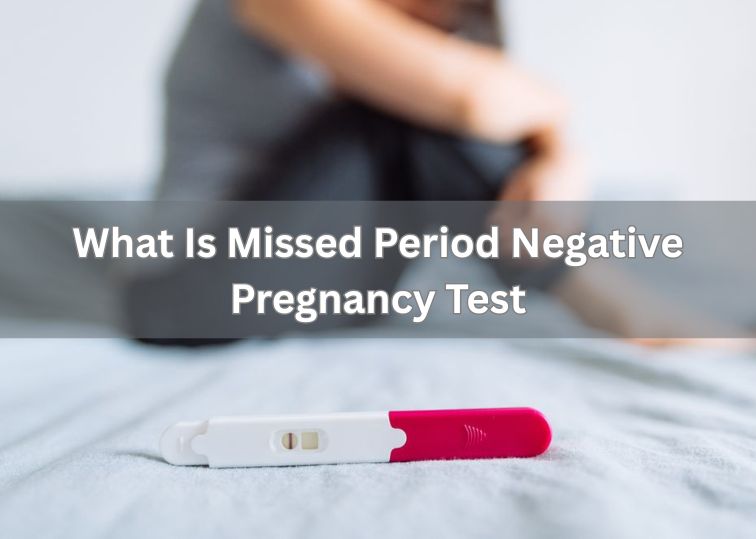Pregnancy Bleeding: Causes, Diagnosis, and Management
Pregnancy bleeding can be alarming for any expectant mother, But it is not always a danger signal. Many women have some bleeding or spotting during pregnancy and go on to deliver perfectly healthy babies. Still, in other cases, the time, volume, or exact symptoms surrounding the bleeding may show that the condition may be more concerning and require emergency care.It helps in diagnosis and the management of the situation to provide the patient with the appropriate amount of reassurance that is needed in the concerning issue at hand by assessing the most probable explanation and consequence of unexplained bleeding in the early stages of pregnancy.
Definition and Overview
Pregnancy bleeding can be defined as any kind of bleeding from the vagina that happens after conception up to the delivery of the baby. It can be light bleeding or heavy bleeding with clots. Causes of bleeding differ according to the time of the pregnancy-either early or late. At the beginning of pregnancy, 20-30% of women have bleeding, but not all cases are serious. Heavy bleeding or bleeding more than once, especially painful or when you feel like you might faint, should be looked at by a doctor.
Bleeding in Early Pregnancy (First Trimester)
Bleeding before 13 weeks of pregnancy is relatively common. The most frequent causes include the following:
a. Implantation Bleeding
This is the process at which the fertilized eggs implant in the lining of the uterus after six to 12 days following conception. Implantation bleeding can be defined as light brown or pink blood appearing and which may last for a couple of hours up to 2 days maximum. It often occurs at menstrual periods when a new one is expected. It is normal and does not pose a threat in the process of pregnancy.
b. Cervical Changes
During pregnancy, the increased blood supply causes the cervix to soften and become more sensitive. Because of this, light bleeding or spotting can result from sexual intercourse, a pelvic exam, or even after a Pap smear. This is called contact bleeding, and it’s not usually serious.
c. Subchorionic Hematoma
Subchorionic hematomas are the collections of blood between the wall of the uterus and the chorionic membrane that surrounds the embryo. It can cause light or moderate bleeding. Small hematomas usually heal spontaneously whereas the larger ones may increase the chance of premature labor or miscarriage. Rest and observation are generally advised.
d. Threatened Miscarriage
When vaginal bleeding occurs but the cervix is close and the fetus is still alive, it is referred to as threatened miscarriage. The bleeding might also be associated with cramping but the pregnancy can still continue. Usually bed rest and abstaining from strenuous sexual activities or those involving a lot of effort are recommended until bleeding stops.
e. Miscarriage (Spontaneous Abortion)
Miscarriage is the loss of a pregnancy before 20 weeks. It may begin with cramping and bleeding and may be followed by the passage of tissue. The cervix may be dilated and ultrasound can confirm the loss of fetus or an empty uterus. Treatment depends on the situation and cause. It may be natural expulsion, medical treatment, and surgical removal (dilation or curettage).
f. Ectopic Pregnancy
Ectopic pregnancy is a pregnancy condition wherein fertilized eggs attach to places other than inside the uterus. It is mostly located in the fallopian tube. The ectopic pregnancy may disturb the fertility of fertilized eggs and may cause internal bleeding and possibly death if the tubes rupture. Most of the common symptoms in this case are pain either at the shoulder or in the abdomen or even fainting, along with vaginal bleeding. Confirmation of pregnancy within the fallopian tubes is most often done with a transvaginal ultrasound or the hCG titration. Though this condition has long been recognised the treatment options, now with methotrexate, have earlier necessitated surgical intervention.
g. Molar Pregnancy (Hydatidiform Mole)
A molar pregnancy is rare condition that is caused by an irregular fertilization, resulting in the growth of a non-viable amount of tissues instead of an embryo. The symptoms include vaginal bleeding, an excessive vomiting, rapid uterine growth and extremely high levels of hCG. Ultrasound shows a typical “snowstorm” patterns. Treatment includes uterine evacuation as well as monitor hCG levels regularly to prevent any complications.
Bleeding in Mid to Late Pregnancy (Second and Third Trimesters)
Bleeding after the first trimester is less common but often more serious. Common causes include:
a. Placenta Previa
A molar pregnancy is rare condition that is caused by an irregular fertilization, resulting in the growth of a non-viable amount of tissues instead of an embryo. The symptoms include vaginal bleeding, an excessive vomiting, rapid uterine growth and extremely high levels of hCG. Ultrasound shows a typical “snowstorm” patterns. Treatment includes uterine evacuation as well as monitor hCG levels regularly to prevent any complications.
b. Placental Abruption
Placental abruption happens when the placenta splits away from the wall of the uterus prior the birth. This causes bleeding between the uterus and the placenta and can cause Vaginal bleeding and abdominal pain and contractions of the uterus. Risk causes include hypertension, smoking trauma, smoking cigarettes, and the use of drugs (especially cocaine). A sudden interruption can deprive the infant of oxygen and lead to extreme bleeding from the mother. The treatment is based on the severity and gestational age – mild cases are usually monitored but severe ones need an emergency delivery.
c. Vasa Previa
The vasa previa is a condition wherein, in vasa previa, blood vessels in the fetal body can move through cervical membranes and not be protected by the placenta or umbilical cord. When membranes tear during labor, the blood vessels can rupture and lead to an immediate loss of blood from the fetus.It’s not common, but it can be it can be life-threatening to the infant. The diagnosis is determined through color Doppler ultrasound. A scheduled cesarean birth is advised prior to labor beginning..
d. Preterm Labor
The presence of bleeding that is noticeable in the third trimester could be a sign of the beginning the onset of labor preterm (labor prior to 37 weeks). This is usually followed by cramps, backaches or pressure in the pelvis. Treatment for hospitalization, medication to reduce contractions, and corticosteroids for maturing lung capacity of the infant are crucial elements of managing.
e. Cervical Insufficiency
Some women have a weak cervix that opens prematurely, leading to bleeding or pregnancy loss in the second trimester. Diagnosis is made by ultrasound, and treatment may involve cerclage — a procedure to stitch the cervix closed — along with bed rest.
Other Causes of Bleeding in Pregnancy
Other possible causes include:
- Infections of the cervix or vagina (such as chlamydia or bacterial vaginosis).
- Cervical polyps or growths that bleed easily.
- Trauma, such as from intercourse or a fall.
- Uterine rupture, a rare but severe emergency, especially in women with prior cesarean scars.
Diagnosis and Evaluation
When a pregnant woman presents with bleeding, careful assessment is essential. Evaluation includes:
- History and Physical Examination:
The clinician asks about the amount, color, and timing of bleeding, associated pain, trauma, or recent intercourse. - Speculum Examination:
To visualize the cervix and rule out polyps, lesions, or infection. - Ultrasound Scan:
To confirm the pregnancy’s location and viability, check placental position, and detect subchorionic hemorrhage or other abnormalities. - Blood Tests:
- hCG levels to assess pregnancy progression.
- Hemoglobin to check for anemia.
- Blood type and Rh factor to determine if anti-D injection is needed.
- hCG levels to assess pregnancy progression.
- Rh Immunoglobulin:
Rh-negative women should receive anti-D immunoglobulin after any significant bleeding to prevent sensitization and future complications.
Management Principles
Treatment depends on the underlying cause and severity:
- Observation and Rest: For minor, unexplained bleeding without pain.
- Medication: Progesterone may be prescribed for threatened miscarriage; methotrexate for ectopic pregnancy.
- Hospitalization: For heavy or recurrent bleeding or suspected placental problems.
- Surgical Procedures: Uterine evacuation for miscarriage or molar pregnancy; cesarean section for placenta previa or abruption.
- Blood Transfusion: In cases of severe blood loss.
- Emotional Support: Psychological counseling is vital after pregnancy loss or traumatic bleeding episodes.
When to Seek Medical Help
A pregnant woman should seek immediate medical care if she experiences:
- Heavy bleeding (soaking a pad within an hour)
- Severe abdominal pain or cramping
- Dizziness or fainting
- Passage of tissue or clots
- Decreased fetal movements (after 20 weeks)
- Fever or foul-smelling discharge
Prognosis and Prevention
The outcome after bleeding during pregnancy is contingent on the cause. Many women who have bleeding early remain healthy during their pregnancy. However, issues like abruption or placenta previa require careful observation and could require early delivery.
Preventive measures include:
- Attending all prenatal appointments
- Avoiding smoking, alcohol, and drugs
- Managing chronic conditions like hypertension or diabetes
- Reporting any bleeding promptly
Conclusion
It can range from benign to potentially fatal. While some minor spotting can be no cause for concern, the presence of more significant bleeding and, more importantly, the recurrence of bleeding can be indicative of complications. These can be resolved with close attention to result a successful outcome for the mother and baby.A self-explaining, supervised, and reassured approach tends to the majority of cases of bleeding in pregnancy resulting in successful deliveries.



